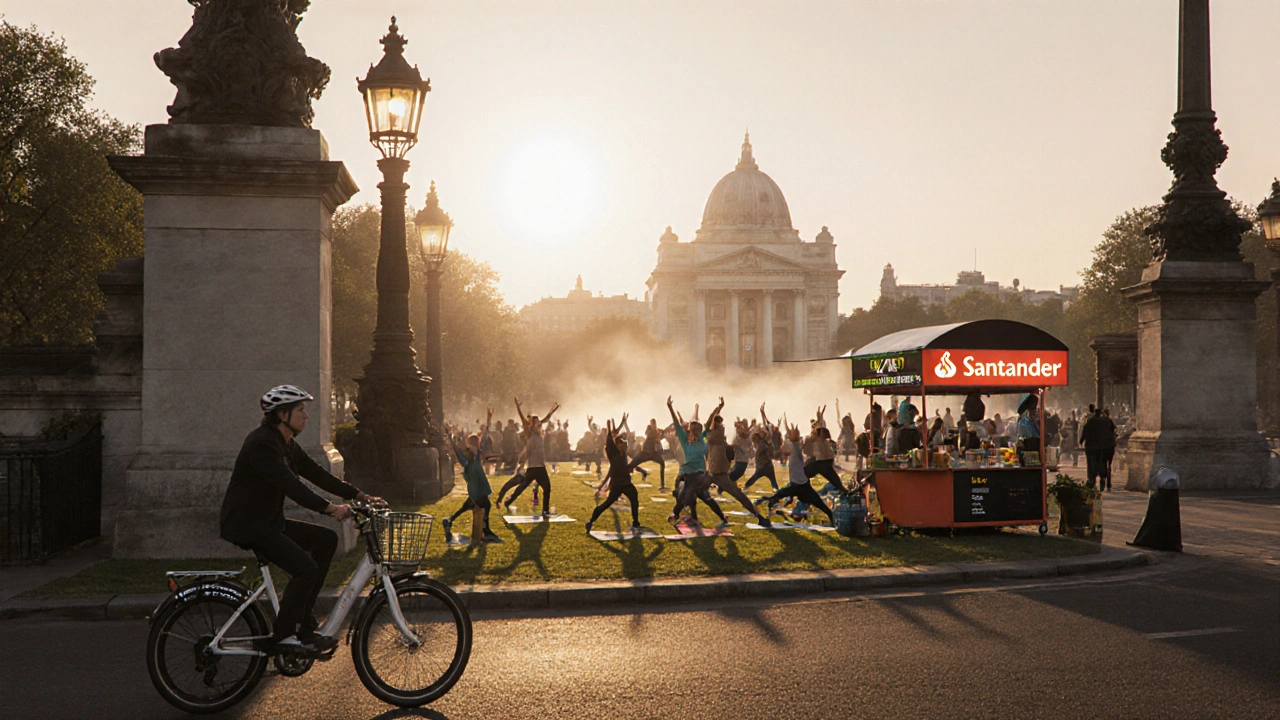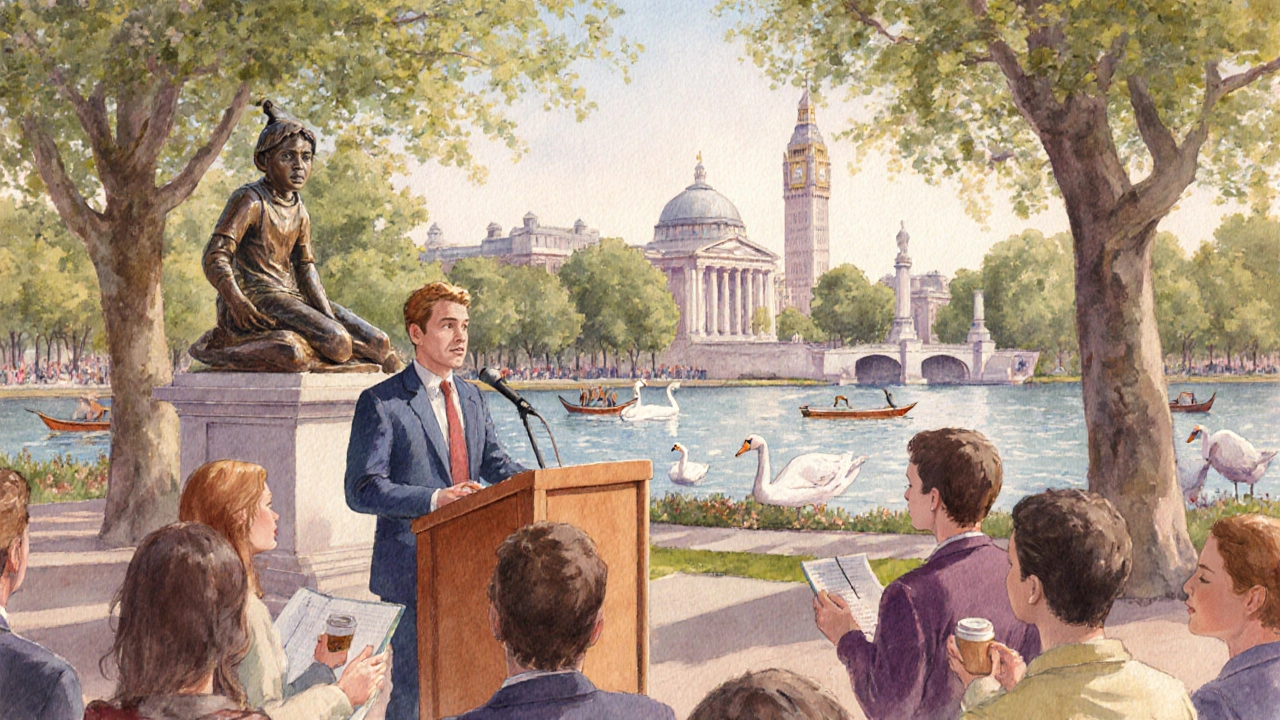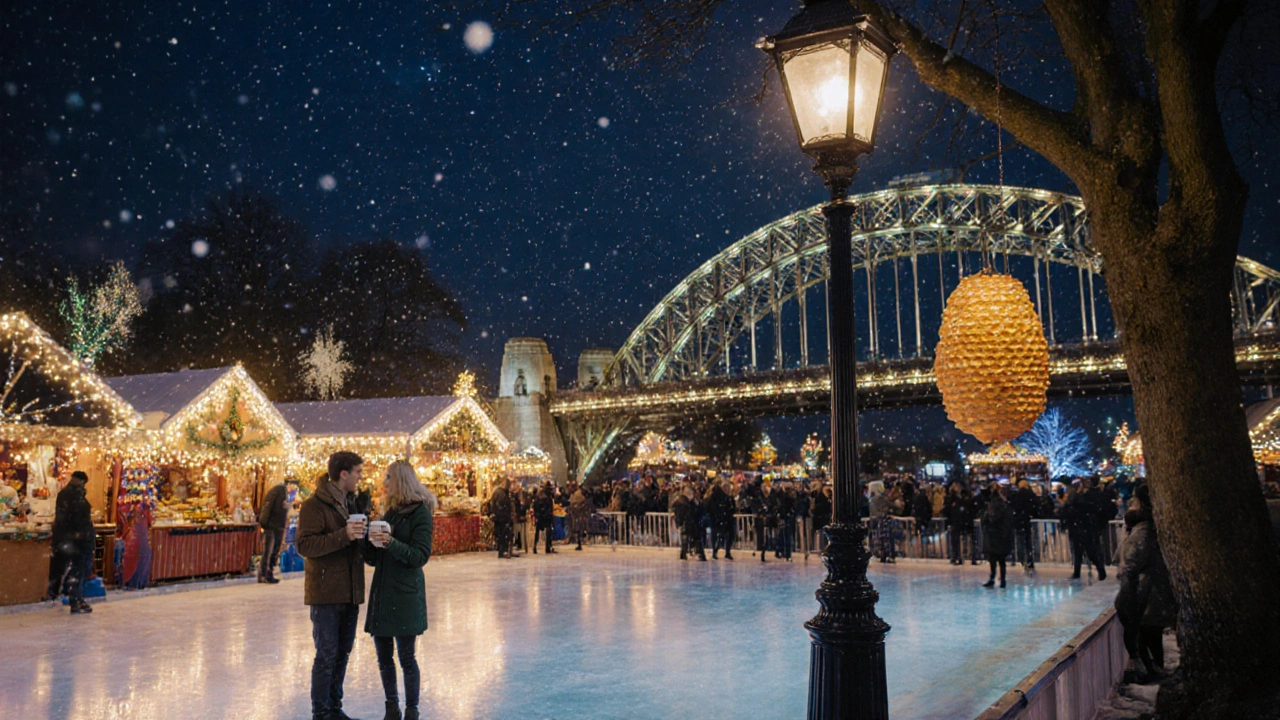Hyde Park: A Perfect Blend of Tradition and Modernity in London

When you step into Hyde Park is a 350‑acre Royal Park in the heart of London that has hosted everything from royal processions to pop‑up food festivals, you instantly feel a mix of old‑world ceremony and contemporary buzz. Whether you live in Shepherd’s Bush, commute from Croydon, or are visiting from abroad, the park offers a playground for history lovers, fitness fans, and anyone looking for a quick escape from the city’s hustle.
Why Hyde Park Still Matters to Londoners
Since its opening to the public in 1637, HydePark has been the stage for defining moments: the Great Exhibition of 1851, anti‑war rallies at Speakers’ Corner, and the annual Winter Wonderland that draws millions each December. What keeps the park relevant today is its ability to host traditional events while adapting to modern tastes - think open‑air cinema, yoga classes by the Serpentine, and pop‑up artisan markets on Saturday mornings.
Getting There - Transport Tips for Every Commute
- Underground: HydePark Corner (Piccadilly Line) lands you at the southern edge, perfect for a stroll toward the Serpentine Bridge.
- Bus routes: 9, 12, 14, 27, 148 and 452 all stop within a five‑minute walk of the park’s main entrances.
- Cycling: Santander Cycle Hire stations sit at Marble Arch, Hyde Park Corner, and Kensington High Street. Cycle lanes along Exhibition Road make a safe ride into the park.
- Driving: Limited street parking in the surrounding neighborhoods; use nearby car parks at Hyde Park Corner or South Kensington for day‑long visits.
Traditional Highlights You Can’t Miss
Even if you’re only in town for a few hours, these historic spots deserve a glance:
- Speakers’ Corner: Since 1872, anyone can speak here. Bring a notebook if you love listening to spontaneous debates on politics, poetry, or philosophy.
- Serpentine Lake: Row‑boat rentals have been a favorite since the 19thcentury. In summer, the lake hosts the Serpentine Paddle‑Board Festival, a modern twist on a classic pastime.
- Albert Memorial: A towering tribute to Prince Albert, flanked by intricate stonework. Guided tours from the Royal Academy of Arts run every hour.
- Peter Pan Statue: Sculpted by Sir George Frampton in 1915, it’s a beloved photo spot for families and literary fans.
Modern Attractions and Seasonal Events
What makes HydePark feel fresh is its calendar of contemporary happenings:
- Winter Wonderland (Nov‑Jan): Ice skating, circus shows, and a German‑style market that turns the park into a festive village.
- Open‑Air Cinema (June‑Sept): Pop‑up screens near the Serpentine show classics and new releases under the stars. Bring a blanket and a takeaway coffee from GAIL’s Bakery on Kensington High Street.
- HydePark Summer Concert Series: Free performances by the London Symphony Orchestra, indie bands, and world‑music groups on the Bandstand stage.
- Yoga & Fitness Pop‑Ups: Morning sunrise yoga sessions are led by local studios like Triyoga. Evening boot‑camps attract fitness enthusiasts from Canary Wharf.
- Food Markets: The Southbank Centre Food Market often spills into the park’s northern edge, offering street eats from Fish! Kitchen and Vegan Street.

Practical Tips for a Smooth Visit
Here’s a quick cheat‑sheet to help you enjoy the park without any hiccups:
- Best time to visit: Early mornings (7‑9am) for a tranquil walk; late afternoons (4‑6pm) for sunset over the lake.
- What to bring: Reusable water bottle, a lightweight rain jacket (London weather is fickle), and a portable charger if you plan to stream music while jogging.
- Dog‑friendly zones: The northern fields allow off‑leash dogs between 7am and 9am; bring a ball for a quick game of fetch.
- Accessibility: All major paths are wheelchair‑friendly; the park’s information desk near HydePark Corner offers Braille maps.
- Safety: Park rangers patrol the grounds, and free Wi‑Fi is available at the Royal Academy pavilion - perfect for checking live event updates.
Comparing Hyde Park with Other Royal Parks
| Feature | Hyde Park | Kensington Gardens | Regent's Park |
|---|---|---|---|
| Size (acres) | 350 | 275 | 410 |
| Iconic landmark | Speakers' Corner | Albert Memorial | London Zoo |
| Signature event | Winter Wonderland | Annual Garden Show | Open‑air concerts |
| Water feature | Serpentine Lake | Kensington Gardens Pond | Regent's Canal |
| Nearest tube stations | HydePark Corner, Knightsbridge | High Street Kensington, Gloucester Road | Regent's Park, Baker Street |
| Dog‑off‑leash area | North fields (7‑9am) | No off‑leash zones | Designated dog park near Broad Walk |
Local Food & Drink Spots Around the Park
After a walk, you’ll likely be hungry. The neighborhoods bordering HydePark are a food lover’s dream:
- Marble ArchRestaurant: Classic British menu with a modern twist; try the beef Wellington during lunch.
- Portobello Road Café: A short bus ride away, famous for its fresh scones and organic coffee.
- Prairie Kitchen: Vegan‑friendly spot near Kensington High Street, perfect for a post‑yoga smoothie.
- The Dorchester Bar: For a splurge, enjoy a cocktail on the terrace overlooking the park’s southern lawns.

How Hyde Park Balances Tradition with Sustainability
London’s council has turned the park into a model of green stewardship. Initiatives include:
- Bee corridors: Hundreds of beehives across the gardens support local pollinators.
- Solar‑powered lighting: The Serpentine’s footpaths use discreet solar panels installed in 2022.
- Zero‑waste events: Winter Wonderland now offers reusable cup stations and compostable food packaging.
- Native planting schemes: Over 1,000 new oak and hawthorn saplings were planted last spring to boost biodiversity.
Planning Your Next Visit - A Mini‑Checklist
- Check the official events calendar for pop‑ups or concerts.
- Pick a transport mode - tube, bus, bike, or walk.
- Pack essentials: water, rain gear, and a reusable cup if you plan to attend Winter Wonderland.
- Choose a spot - the north meadow for picnics, the Serpentine for boating, or the south lawns for sunset views.
- Enjoy responsibly - stay on marked paths, keep dogs leashed after the early‑morning window, and dispose of litter in provided bins.
Frequently Asked Questions
When does Winter Wonderland open and close?
Winter Wonderland usually runs from the first weekend of November until the second weekend of January. Opening hours are 10am to 10pm on weekdays and 10am to midnight on weekends.
Can I bring my own food and have a picnic?
Yes, picnicking is allowed on the designated lawns. Alcohol is prohibited, and you must clean up after yourself.
Are there wheelchair‑friendly routes?
All main paths, including the route around the Serpentine, are fully wheelchair‑accessible. The park information desk provides tactile maps for vision‑impaired visitors.
What’s the best time for bird‑watching?
Early morning in spring, especially around the lake’s reed beds, offers the highest chance to spot swallows, kingfishers, and migratory warblers.
Is there free Wi‑Fi in the park?
Free Wi‑Fi is available at the visitor centre near HydePark Corner and at the Royal Academy pavilion. It’s ideal for checking live event updates.
Rahul Ghadia
October 12, 2025 AT 23:50Sure, Hyde Park screams modernity, but let’s not pretend the royal statues aren’t the real stars;; they’ve been there since the 1600s-still more timeless than any pop‑up food truck!!!
lindsay chipman
October 13, 2025 AT 03:46From an urban‑sociological perspective, Hyde Park functions as a polycentric node that integrates heritage conservation with contemporary placemaking. The synergistic overlay of legacy monuments and transient micro‑events generates a dynamic equilibrium, fostering both cultural capital and economic throughput. Moreover, the park’s infrastructural elasticity-evident in its adaptive re‑use of the Serpentine for paddle‑board festivals-optimizes spatial utilization metrics. Such multimodal activation aligns with the city’s broader sustainable mobility agenda, leveraging transit‑oriented development paradigms. In sum, the park is a living lab for interdisciplinary policy deployment.
Roberto Lopez
October 13, 2025 AT 05:10That’s a solid breakdown; the park’s ability to pivot between heritage and hype really showcases its design resilience.
Gopal Ram
October 13, 2025 AT 09:20Alright, let’s set the record straight about Hyde Park-because people love to romanticize it without mentioning the nitty‑gritty details. First off, the lawns aren’t just endless green carpets; they’re meticulously maintained ecosystems that require weekly aeration, soil amendment, and pest‑management schedules. The Serpentine, while picture‑perfect, actually suffers from periodic algae blooms that force temporary closures for swimmer safety. And don’t get me started on the bee corridors-yeah, the city installed hundreds of hives, but most of them are on shaky wooden boxes that need regular inspection, or else the colonies collapse. The solar‑powered lighting is a nice PR stunt, yet the panels are hidden under the path stones, making maintenance a labyrinthine task. Winter Wonderland looks magical, but the waste‑reduction program is still battling single‑use plastic cup leftovers that litter the grounds after peak nights, which forces volunteers to do extra clean‑ups at dawn. Accessibility is touted as flawless, yet the wheelchair‑friendly routes have occasional gravel patches that can jostle a wheelchair’s momentum. On the culinary front, the pop‑up markets are great for variety, but the food stalls generate a surge of waste that the park’s composting trucks can’t always handle in real‑time. The off‑leash dog zone is a blessing for pet owners, but it’s limited to a narrow morning window, which means many dog‑walkers end up crowding the area and causing minor conflicts. Historically, Speakers’ Corner is a bastion of free speech, but the noise levels often exceed 85 dB during heated debates, prompting occasional complaints from nearby residents. The Albert Memorial’s stonework, while awe‑inspiring, is subject to weather‑induced erosion, requiring regular cleaning that temporarily blocks visitor pathways. The Peter Pan statue draws Instagram shots, yet its bronze patina is prone to graffiti, demanding frequent restoration. Lastly, the park’s free Wi‑Fi is a convenient perk, but the bandwidth caps at 2 Mbps per user, which can be painfully slow if you’re streaming a concert live. So, while Hyde Park is undeniably iconic, it’s also a complex, constantly evolving urban organism that demands relentless upkeep and thoughtful stewardship. 🙌
Mitchel Geisel
October 13, 2025 AT 10:43Wow, thank you for the exhaustive checklist-who knew a city park could double as a full‑blown operations manual?
Praveen Lingareddy
October 13, 2025 AT 14:53Honestly, the park’s “green” initiatives feel more like a publicity stunt than genuine stewardship; we deserve transparency, not just Instagram‑ready sunsets.
Emily S Hurricane
October 13, 2025 AT 19:03Pro tip: grab a reusable coffee cup at GAIL’s Bakery before heading to the Summer Concert Series-you’ll save waste and stay energized.
ian haugh
October 13, 2025 AT 23:13Can’t wait to check out the pop‑up yoga sessions!